
Nine out of ten interior designers think color is key in how we see a room. Many think dark colors make a room look tiny. But the truth is, the choice of color depends on how it works with light and your vision.
The right colors can turn a small room into a cozy retreat or make it feel open. For example, picking navy blue for a bathroom or a teal for the kitchen can change everything.
Key Takeaways
- Dark hues and warm tones can make a room feel smaller and more intimate by advancing the walls.
- Light, cool colors can visually push the walls back, creating the illusion of a larger, more open space.
- Careful consideration of lighting, decor, and personal preference is crucial when using color to shape a room’s appearance.
- Vertical stripes and strategically placed mirrors can also contribute to the perception of space in a small room.
- Minimizing clutter and utilizing smart storage solutions are essential for maintaining a spacious, uncluttered feel.
Learning about colors and design can change how your rooms feel, big or small. Whether you love dark or light shades, you can make your space just the way you want.
Colors That Make a Room Appear Smaller
The colors you pick for your room can change how big it feels. Dark colors make the walls seem closer. Warm shades add a cozy feel. Knowing color psychology can help you make a small space seem just right.
Dark Hues and the Small Space Illusion
Dark colors make walls look nearer, creating coziness. However, the room might feel too small. Since dark shades don’t reflect light well, they can make walls feel like they’re closing in.
Warm Tones and Visual Perception
Warm colors, such as red, orange, and yellow, also make walls seem tighter. This boosts the room’s cozy vibe. Using dark colors with warm tones ramps up this effect.
Knowing about color psychology is a big advantage in room design. By using dark and warm colors wisely, you can adjust how people see your space. This helps you create the perfect vibe for any room.
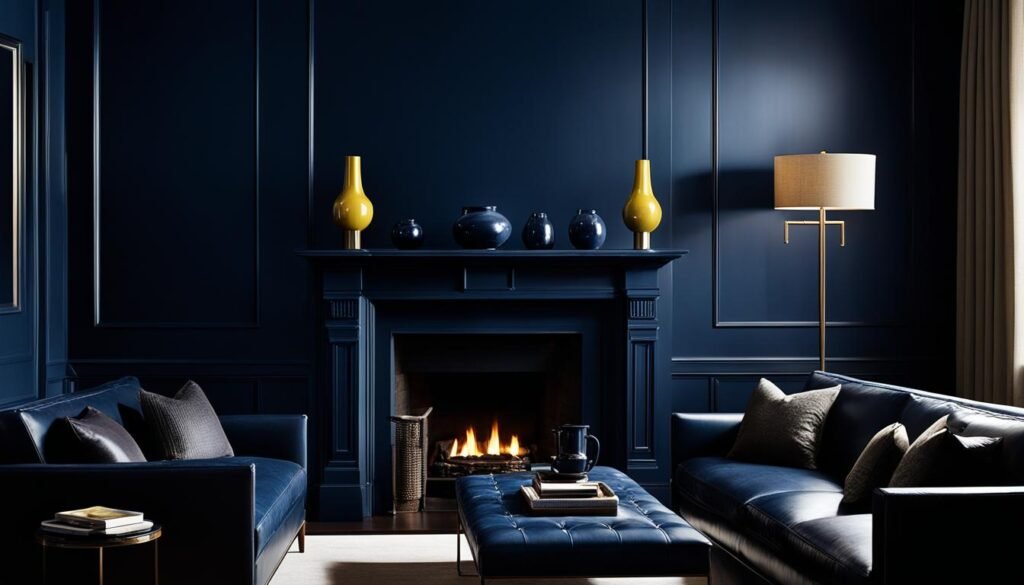
“Dark colors have a way of ‘advancing’ in a room, making the walls seem closer than they actually are.”
The Power of Color Psychology
The colors you pick for your house can change everything. They affect how a room feels and what mood it sets. By choosing the right colors, you can make your home a place that looks good and feels good too.
Warm colors bring energy and passion. They make a room feel alive. Reds and oranges can make you feel excited and ready for action. On the other hand, cool colors like blues and greens are calm. These colors help you relax. They bring a sense of peace to a room.
The lightness or darkness of a color also matters. Light colors can make a room feel open and relaxing. Darker colors make it cozy. Mixing these types of colors can find the perfect balance. This way, you’ll create the atmosphere you want in each room.
Does your living room need a boost of energy? A warm color theme can make it lively. For bedrooms, cool colors are best. They help you relax and sleep better. And if you work from home, blue or green could improve your focus.
Knowing about color psychology is important in interior design. It lets you design spaces that are both beautiful and good for your health. Whether you want to make a room lively, calm, or balanced, color can do the trick.
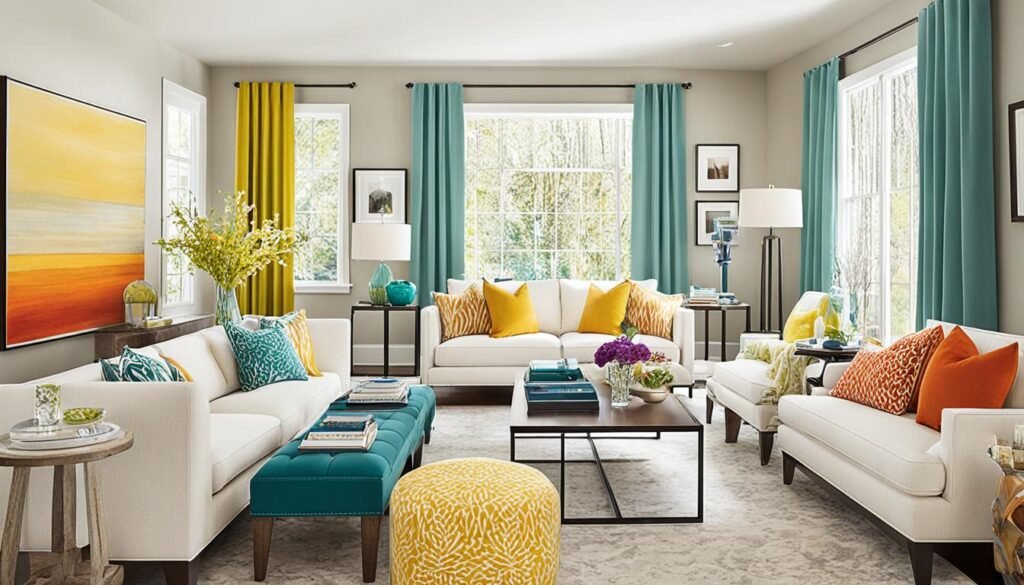
| Color | Physical Effects | Psychological Association |
|---|---|---|
| Red | Faster and more powerful reactions, higher blood pressure, and heart rate | Physical energy, passion, and aggression |
| Orange | Increased appetite and energy | Enthusiasm, creativity, and optimism |
| Yellow | Enhanced memory, neural activity, and raised blood pressure and pulse | Happiness, warmth, and intellect |
| Green | Slower heart rate and preservation of energy | Harmony, growth, and nature |
| Blue | Lower heart rate and blood pressure, lower body temperature, slower breathing, and improved sleep | Calmness, trust, and productivity |
| Purple | Enhanced senses and self-awareness | Creativity, luxury, and spirituality |
Color choices can really change how you feel in a room. Understanding color helps you pick the best ones. You can create a lively living room or a calming bedroom. The right color design can make your home look and feel better.
Cool Tones: A Contrasting Effect
Cool tones can make a room seem bigger. Colors like blues, greens, and purples make walls look further back. Yet, if a cool color is too bright, it won’t have this effect. So, finding the right balance is key.
Combining Cool Tones and Lighting
Combining cool hues with clever lighting is like magic. It can add depth and a feeling of space to a room. Adding dark, cool colors can also make a room feel cozy, yet still look deep because of the lighting.
Imagine adding a deep, moody blue to your walls. Then contrast it with white on the ceiling and edges. This makes your space seem bigger and welcoming. Or you could go for a light, airy blue on the walls. Pair it with lots of lights. The room will magically appear larger.
| Color Scheme | Lighting Approach | Perceived Room Size |
|---|---|---|
| Deep, Moody Blue Walls | Bright, White Ceiling and Trim | Larger and More Inviting |
| Light, Airy Blue Walls | Multiple Light Sources | Expanded Perception of Space |
Think through how cool colors and light work together. You can build a room that’s big and beautiful. It should also match your taste.
“The more you know about the power of color, the more you can use it to create the right mood.”
To get cool tones right, you need the perfect mix of color and light. Play around with colors and lights. This will help you discover how to make your space feel just right.
Room Lighting and Interior Design Tips
Room lighting is key to making a home feel warm and welcoming. It plays with the paint colors and can change a room’s size and mood. Dark colors might look different in bright light, so test them at different times.
How you use light and dark shades together matters a lot. If you want a room to feel big and open, keep the colors similar. Mixing warm and cool colors right can make a room look inviting and pretty.
Having many lights in a room makes it feel cozier and larger than it is. Don’t just use one big light in the middle. Put lights all around. Placing mirrors near lights can make your space look bigger, too.
To really improve your room’s look, try different light fixtures. Maybe glass wall lights or square lamps. They can make your place feel more stylish and roomy.
FAQ
How can dark colors and warm tones make a room appear smaller?
Is it a myth that dark colors always make a room look smaller?
How do light and dark colors affect the perception of room size?
How do warm and cool colors affect the perception of room size?
How does room lighting affect the perception of color and space?
Source Links
- https://www.housebeautiful.com/room-decorating/colors/g300/paint-small-rooms-0408/
- https://www.pods.com/blog/tips-to-make-your-home-seem-bigger
- https://www.lowes.com/n/how-to/make-small-room-look-larger
- https://www.kylieminteriors.ca/light-dark-warm-cool-how-to-make-a-room-feel-bigger-or-smaller-using-paint-colours/
- https://www.homesandgardens.com/interior-design/what-colors-make-a-small-room-look-bigger
- https://www.benjaminmoore.com/en-us/project-ideas-inspiration/interiors/make-small-room-look-bigger-brighter
- https://www.theinteriordesigninstitute.com/blog-power-of-color-psychology-in-design
- https://unikavaev.com/blog/color-psychology/
- https://mhanational.org/surroundings/color-psychology-explained
- https://www.archdaily.com/935067/how-colors-change-the-perception-of-interior-spaces
- https://www.hkinteriors.com/how-to-make-a-room-look-bigger/
- https://www.stonegableblog.com/can-you-mix-warm-and-cool-colors-in-decor/
- https://www.housebeautiful.com/room-decorating/living-family-rooms/g2310/small-living-room-decorating-ideas/
- https://www.homesandgardens.com/interior-design/color-combinations-for-small-rooms
- https://www.pooky.com/blogs/inspiration/interior-design-how-to-use-lighting-to-make-a-room-look-bigger



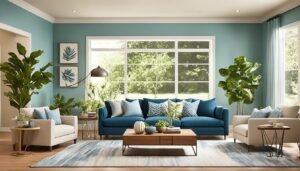
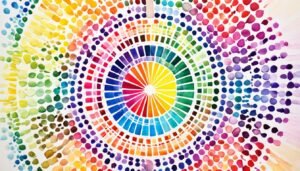
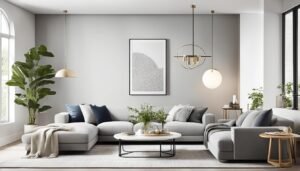
No comment yet, add your voice below!